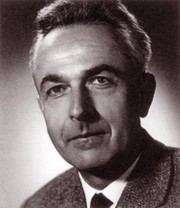
“[…] for their important work on the development of the freeze-etching procedure as a method of preparing plant, animal and human cells. Their discovery allowed the ultrastructure of cells to be realistically represented in the high vacuum of an electron microscope and earned them the highest respect of the scientific community.”
Das Gefrierätzverfahren besteht darin, zuerst die kurz auf -100°C eingefrorenen Zellen anzuschneiden, das Eis im Hochvakuum wegzusublimieren (‘Ätzung’) und vom entstandenen Relief durch Schrägaufdampfen von Platin einen Abdruck zu erstellen, der dann im Durchstrahlmikroskop ein negatives Oberflächenbild ergibt. Diese ursprünglich zur Untersuchung von Viren angewandte Methode sei von den beiden Preisträgern in die zytologische Ultrastrukturforschung eingeführt worden. Mit ihrer Pionierarbeit, so die Experten, eröffneten sich grosse Perspektiven in der Physiologie und der Krebsforschung.

